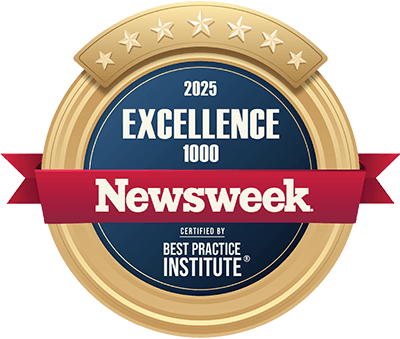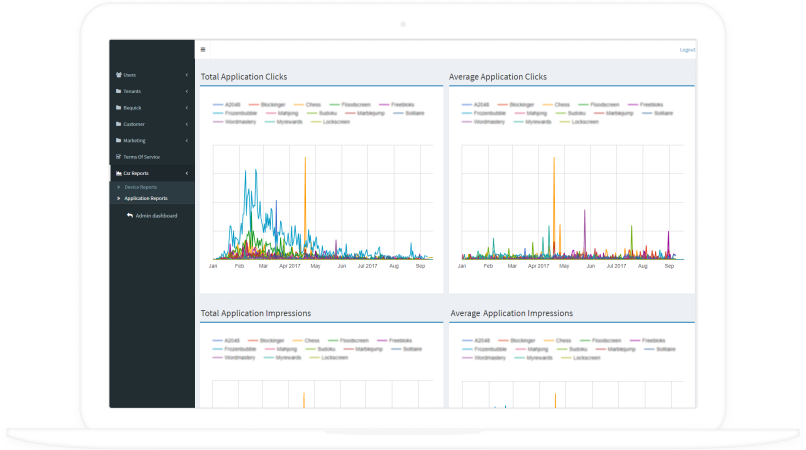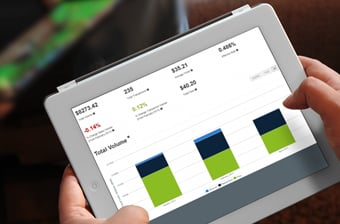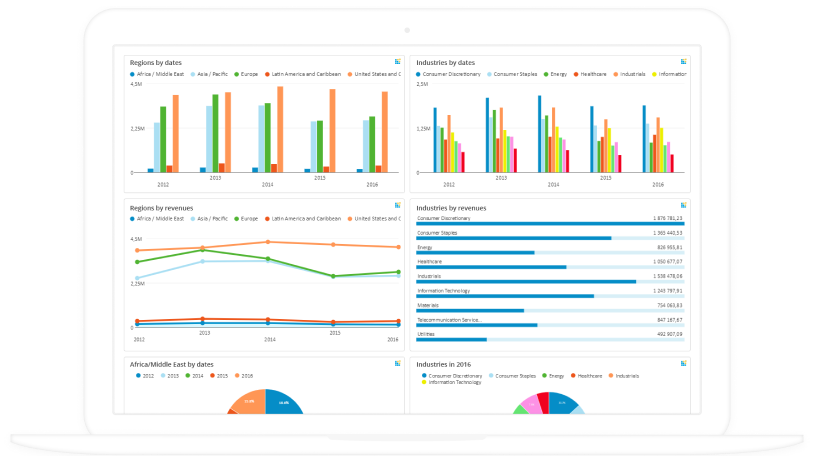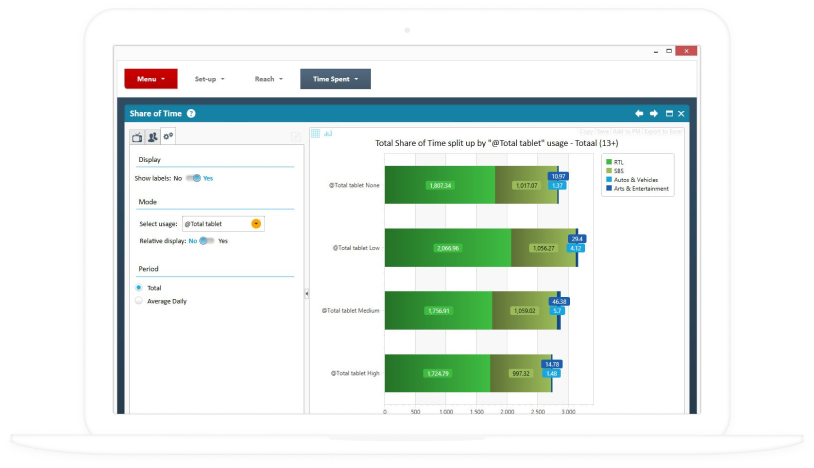Enterprise Data Management
Talents, Tools, and Costs
ScienceSoft provides data management services to help companies ensure high data quality, safe and easy data access for informed decision-making across the company.
Enterprise Data Management: The Essence
Enterprise data management is the process of establishing data governance standards and policies for collecting, storing, accessing, and analyzing data in a way that would ensure its accuracy, consistency, and security throughout the lifecycle.
According to ScienceSoft's experience with real-life projects, enterprise data management can be briefly described as follows:
- Enterprise data management implementation timeframes: full-scale data management implementation for a 5,000-employee company may take from 24 to 36 months.
- Key steps: enterprise data management strategic planning; planning, development and launch of constituent data management projects.
- Enterprise data management team: project manager, system analyst, solution architect, data engineer, DevOps engineer, QA engineer.
-
Implementation costs: $30,000–$1,000,000, depending on solution complexity. Use our online calculator to get a tailored ballpark quote.
Enterprise Data Management Implementation Plan
The suggested plan is based on ScienceSoft’s 36-year experience in providing data analytics and data management services. It features a sample procedure we follow when establishing enterprise data management for our clients.
Enterprise data management strategic planning
Step 1. Defining data management objectives
Data management objectives are based on the overall corporate objectives and used when establishing data governance policies and KPIs to assess data management implementation success. Common enterprise data management objectives usually include:
- Data is easily accessed, used properly and to its max value.
- Data is of acceptable quality.
- Data is secure.
- Data is compliant with standards and regulations (GDPR, HIPAA, etc.).
ScienceSoft’s best practice: When defining data management objectives, our consultants interview all stakeholders to collect their needs, goals, and vision of the successful data management project implementation. It helps understand their priorities, plan the development process accordingly and as a result - provide a satisfactory end product.
Step 2. Evaluating the current state of data management
It’s necessary to analyze:
- Existing data architecture and data flows.
- Data source systems (their number, connectivity between systems, who has access to them, etc.) and data stored there (data type and structure, volume, sensitivity level, etc.).
- Applied data security practices (data access and usage policies, who monitors compliance with data security policies, etc.).
- Data quality management practices (established data quality metrics, data auditing policies, etc.).
- Master and metadata management practices, etc.
Step 3. Establishing data governance
- Defining data governance policies and standards for each enterprise data management component:
Data architecture
System architecture diagrams, entity-relationship diagrams, data flow diagrams, etc., which provide an overview of how data is captured, ingested, transformed, modeled, and put to usage across the company.
Data integration policies and standards for consolidating data from disparate sources into a single dataset via ETL/ELT processes or data virtualization.
Data quality management
Rules for data quality (e.g., data profiling, cleansing, and matching) to ensure data is fit to serve its objectives.
Policies for controlling the data storage environment (stored data types, data location, recovery procedures, storage environment performance, etc.).
Data security
User authentication and authorization policies, data access policy, data audit policy, etc., to prevent unauthorized data access and its inappropriate usage.
Reference and master data management
Data deduplication and standardization policies to enable master and reference data consistency across transactional and business intelligence systems.
Metadata management
Business glossaries and data lineage traceability documents, which maintain information on data definition, relationships, movement, etc.
Data warehousing, analytics, and reporting
Policies for providing and overseeing data analytics processes and infrastructure.
Content management
Policies for storing, sharing, indexing and auditing corporate data stored outside relational databases for maintaining data integrity and enabling easy data access.
Implementation of data management projects
Once data governance is established, an enterprise can define an enterprise data management implementation plan and create implementation roadmaps for the entire program and then for each data management component.
ScienceSoft implements a data management program with the following steps for its elements:
1
Requirement engineering and architecture design
- Engineering requirements for a data management element.
- Reviewing technology stack currently used to enable the element.
- Outlining the optimal architecture and feature set for the future technical solution.
- Defining the optimal tech stack.
2
Planning the implementation of a data management project
- Determining a data management project scope, deliverables and timeframes.
- Defining a data management project team and designing collaboration workflows.
- Developing a project KPI suite based on the set data governance standards.
- Outlining possible project risks and defining a risk mitigation strategy and plan.
- Deciding on the relevant sourcing model.
- Estimating efforts, TCO and ROI for the data management project.
ScienceSoft’s tip: Our practice has shown that effective data management project planning can help reduce project time and budget by up to 30%.
3
Technical solution development and launch
- Implementing a technical solution for each data management component and integrating it into the existing IT environment.
- Deploying the tech solution in production.
- User acceptance testing.
- User training.
ScienceSoft’s best practice: To deliver a tech solution for each data management component in the shortest time possible, in our projects we opt for DevOps-driven iterative development – it assures the quickness and frequency of releases without sacrificing the solution’s quality.
Consider Professional Services for Enterprise Data Management Implementation
Enterprise data management consulting
- Defining data management objectives.
- Evaluating the existing data management maturity level.
- Creating a business case for a data management program.
- Establishing data governance.
- Planning out data management implementation.
- Defining the architecture and optimal tech stack.
Enterprise data management implementation
- Defining data management objectives.
- Evaluating the existing data management maturity level.
- Establishing data governance.
- Architecture design and software selection for a technical solution(s).
- Development and stabilization of a tech solution for each data management program element.
- Tech solution launch.
ScienceSoft as a Trusted Data Management and Data Analytics Partner:
When we first contacted ScienceSoft, we needed expert advice on the creation of the centralized analytical solution to achieve company-wide transparent analytics and reporting.
The system created by ScienceSoft automates data integration from different sources, invoice generation, and provides visibility into the invoicing process. We have already engaged ScienceSoft in supporting the solution and would definitely consider ScienceSoft as an IT vendor in the future.
Heather Owen Nigl, Chief Financial Officer, Alta Resources
Why ScienceSoft for Enterprise Data Management?
- Data analytics and data science services since 1989.
- Data warehousing and BI expertise since 2005.
- Big data services since 2013.
- Dedicated data management team of data management consultants, solution architects, data engineers, etc.
- Expertise in 30+ industries, including healthcare, banking, lending, investment, insurance, retail, ecommerce, professional services,manufacturing, transportation and logistics, energy, telecommunications, and more.
- ISO 9001 and ISO 27001-certified to assure proper quality management procedures and the security of client data.
- An in-house PMO and established project management practices to drive projects to their goals regardless of time and budget constraints, as well as changing requirements.
Typical Roles for Enterprise Data Management Implementation
A data management program can be implemented either in stages by one team, or some program components can be implemented in parallel by dedicated teams. The implementation in steps will require the following roles:
Program manager
- Outlines the scope of the data management program.
- Determines the efforts, timelines, KPIs, and deliverables for the data management program and program elements.
- Assembles and helps establish the collaboration within the team involved in the enterprise data management program.
- Monitors and manages the costs of the program and program elements.
- Oversees the overall program execution.
Data management consultant
- Communicates with stakeholders to elicit data management needs and expectations.
- Analyzes the existing data management practices and environment (data architecture, data flows, etc.), data governance policies, etc.
- Helps conceptualize a data management program and develop an implementation strategy.
- Helps develop data governance policies and monitor compliance with them.
- Coordinates the creation of the overall enterprise data management project documentation.
- Conducts training for users (for example, on data governance policies and standards, on using new software, etc.).
Solution architect
- Assesses the existing data management environment, defines issues and optimal ways for improvement.
- Creates technical solution architecture based on the elicited business requirements.
- Recommends and implements appropriate tech approaches for enterprise data management, recommends a tech stack and assesses the business impact certain tech choices have.
- Provides supervision to development teams.
Data engineer
- Analyzes source systems, identifies data quality issues, their root causes, and steps to resolve them.
- Builds data flows, develops conceptual, physical and logical data models. Maintains data models along with corresponding metadata.
- Builds ETL/ELT processes to route source data to the destination.
- Manages master data, including creation, updates, and deletion.
DevOps engineer
- Introduces continuous integration/continuous delivery (CI/CD) pipelines to automate and streamline the development of technical solutions for data management components.
- Monitors the IT infrastructure state, handles ongoing maintenance.
QA engineer
- Designs a test strategy, create tests to evaluate the developed technical solutions for a data management program.
- Plans and coordinates testing activities, documents test results.
- Provides recommendations on data management software improvements.
Enterprise Data Management Sourcing Models
Benefits of Implementing Enterprise Data Management with ScienceSoft
Guaranteed data quality
We take special care of data quality procedures to ensure consistency, accuracy, completeness, auditability, timeliness and uniqueness of your data.
BI + Big data
Our team is equally capable of deriving value from both traditional and big data.
Services from A to Z
We deliver a whole pool of services to provide our clients with comprehensive BI and big data solutions: from a solution's design to implementation.
Cost of Enterprise Data Management Implementation
Enterprise data management implementation cost may vary from $30,000 to $1,000,000+, depending on project complexity. Below, you can see the major cost factors:
|
|
|
About ScienceSoft
ScienceSoft is an IT consulting and software development company headquartered in McKinney, Texas. We help enterprises implement complex data management initiatives to maximize data value and enhance decision-making. Being ISO 9001 and ISO 27001 certified, we provide data management services relying on a mature quality management system and guarantee cooperation with us does not pose any risks to our clients’ data security.
